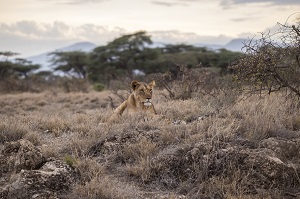 The illegal hunting and killing of rhinos and lions in South Africa and Zimbabwe have ignited a heated debate over the so-called trophy hunting, as well as the role it plays in conservation.
The illegal hunting and killing of rhinos and lions in South Africa and Zimbabwe have ignited a heated debate over the so-called trophy hunting, as well as the role it plays in conservation.
A range of claims have been made recently regarding the benefits that the trophy hunting brings to the economic segment of Africa. That’s where hunting is a big game that turns to be big business. The latter is reported to be estimated near $200 000 000 yearly.
The economic significance of the issue polarises the debates. On one hand, animal rights activists tend to protect the wildlife conservation, while the hunters claim that ‘sustainable’ use of wildlife is a must for the modern conservation strategies. Let’s take a look at some sources and studies to investigate the matter.
A lot of recent articles have informed on the revenues that come from the trophy hunting – over $200 000 000 on the black continent. According to the article ‘Biological Conservation’ published in 2006, there are many countries, where hunting industries are significantly developed. Among them Namibia, South Africa, Botswana, Zimbabwe, Tanzania and others.
In terms of animals shot and visiting hunters, South Africa had the most grandiose hunting industry. The most significant was the trophy hunting in Botswana, followed by Namibia and Tanzania. So, the question is how much is South Africa actually earning from the trophy hunting? According to the estimation performed by the Department of Environmental Affairs of South Africa in 2012, trophy hunting generated near 807 million and 1 billion in 2013. The information obtained is based on the ‘species fees’ that come from the hunters to the landowners and farmers, as well as regular rates that are usually charged by the hunting outfitters in order to cover all accommodation and food costs.
The 1 billion that was gained in 2013 included the species fees of near 757 million, as well as 314 millions of daily rates, with 44 000 animals killed to get trophies in that particular year. It is important to mention that the figures provided above do not include indirect income gained from trophy shipping fees, taxidermy, tourism activities and companions that are not related to hunting. Neither does it include data regarding the hunting permits for particular species that are not mentioned in the “protected-and-threatened list” as these fees usually differ from one province to the other and are charged only at provincial level.
How does trophy hunting compare to the regular tourism? According to the recent reports, in 2013 tourism had contributed 323 billion to the GDP of South Africa. More than 8 500 trophy hunters come to SA annually, compared to almost 9,5 million tourists. In sub-Saharan Africa, nearly 18 500 hunters participate in related activities every year, according to the reports, generating near $201 million in contrast to the estimate provided by the World Bank – 33.8 million visitors in 2012 (with 36 billion earnings in US dollars.)
The local economists say that while the number of hunters, as well as the contribution they make to the GDP, is not huge, trophy hunters are spending more and more exceeding the average tourists.
In 2014, the investigators of the economic impact of hunting in Free State, Limpopo and Northern Cape provinces of South Africa found 4 558, 17 806 and 9 072 jobs (accordingly) depend on the hunting area, as well as the ones of individuals employed permanently on the game farms.
In the same way, the ex-chief executive of WWF SA John Hanks argues that in the areas with high wildlife density and beautiful landscapes, the potential for the photo tourism is greater than the one for the trophy hunting.
References:
- LINDSEY,P.A.; ROULET,P.A. & ROMAÑACH,S.S. (2007): Economic and conservation significance of the trophy hunting industry in sub-Saharan Africa. Biological Conservation 134:455-469.
- Booth, V. 2002. Analysis of wildlife markets. Report. World Wildlife Fund, Harare, Zimbabwe.
- Whitman, K., A. Starfield, H. Quadling, and C. Packer. 2004. Sustainable trophy-hunting of African lions. Nature 428: 175–178.
- Mbaiwa, Joseph E. 2004. “The Socio‐Economic Benefits and Challenges of a Community‐Based Safari Hunting Tourism in the Okavango Delta, ” The Journal of Tourism Studies 15 (2): 37–50.
- BAKER,J.E. (1997): Trophy hunting as a sustainable use of wild life resources in southern and eastern Africa. Journal of Sustainable Tourism 5: 306-321.
- Barnett, Rob, and Claire 2006. Sport Hunting in the Southern African Development Community (SADC) Region: An Overview.
- Ian Michler, ‘Botswana’s Great Lion Debate’, Africa Geographic, 01 January 2001 & Martin Hutter, ‘Utilization of Wild Living Animals, Conservation and Sustainable Development: Contradiction in Terms or a Promising Approach?’, Pro Wildlife, 2002.